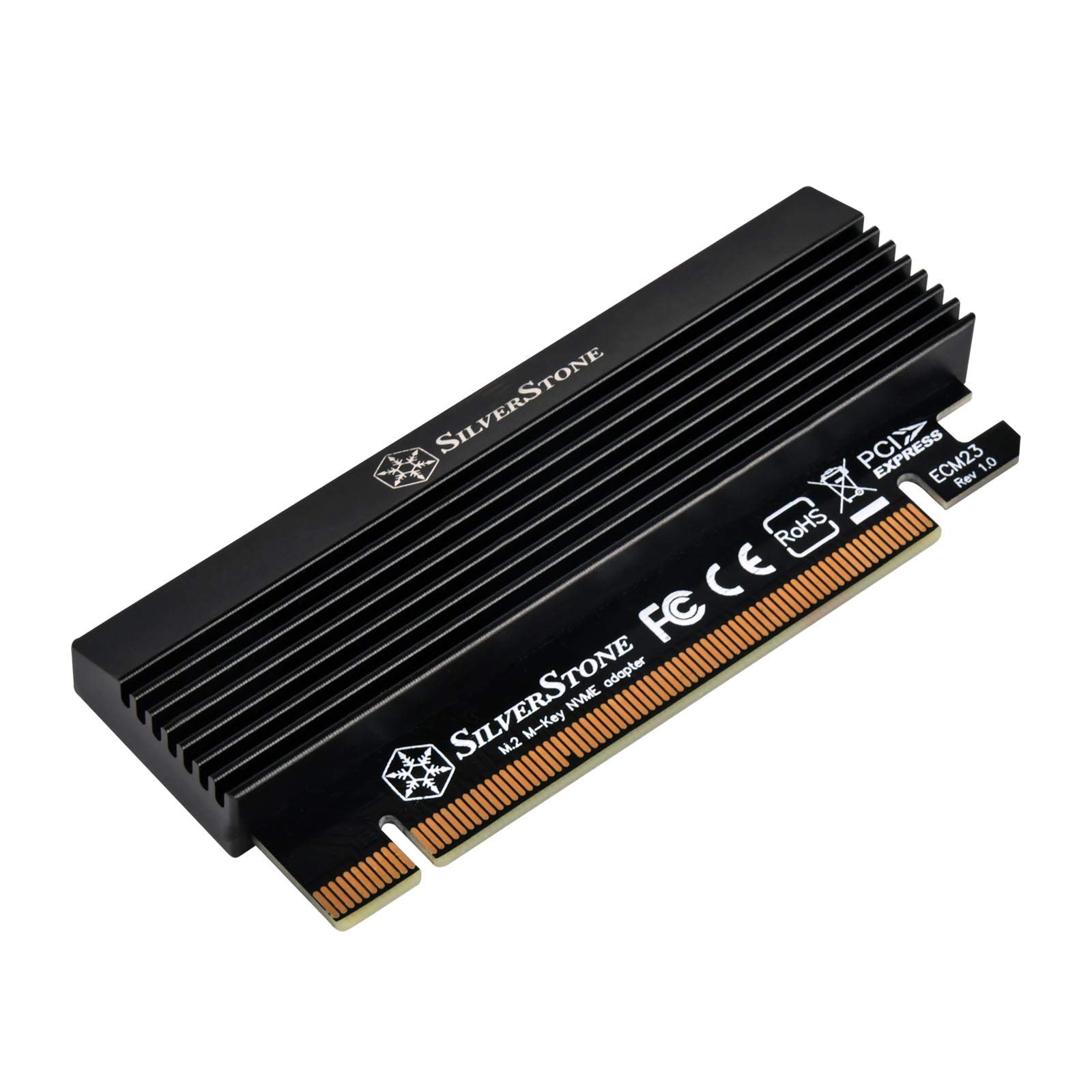





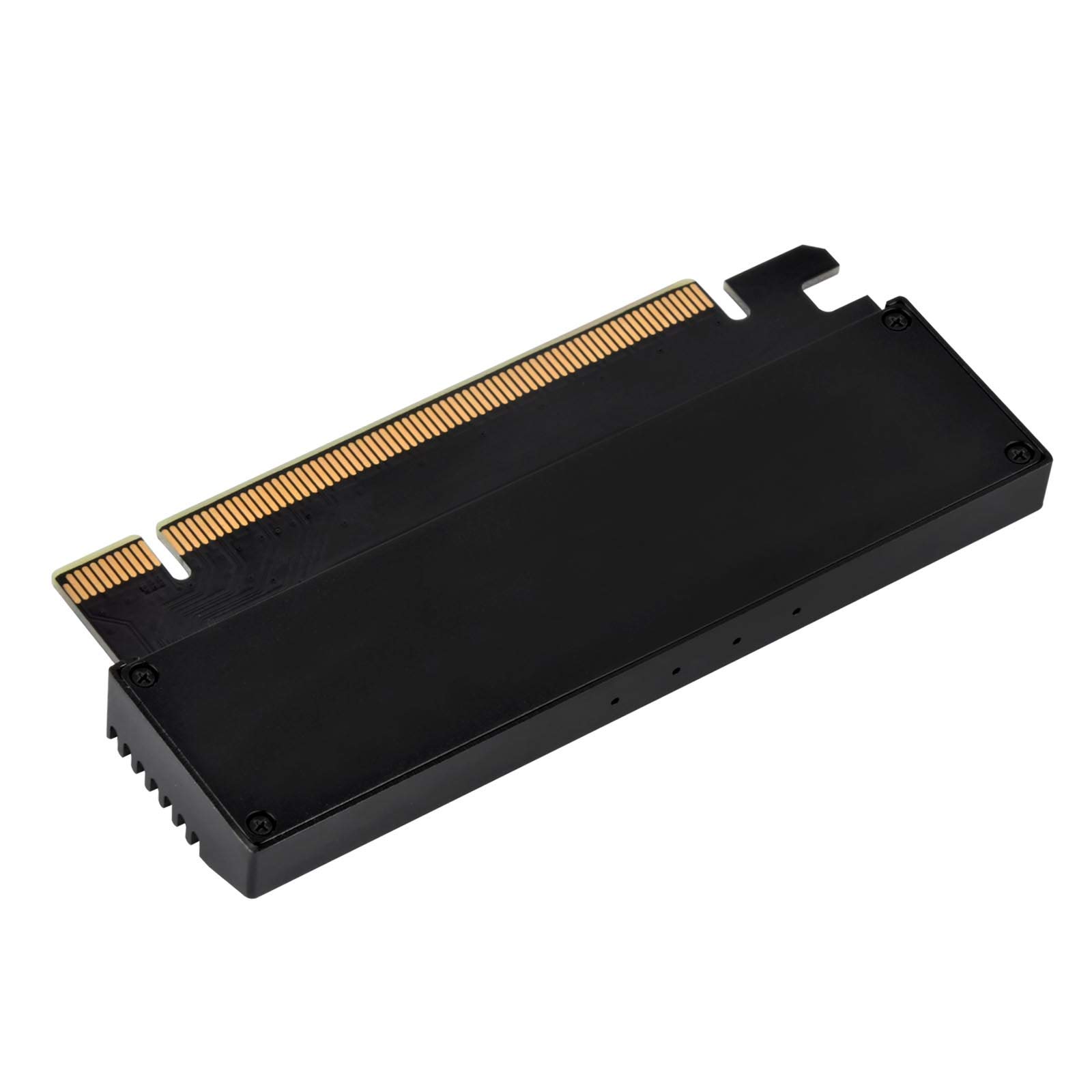
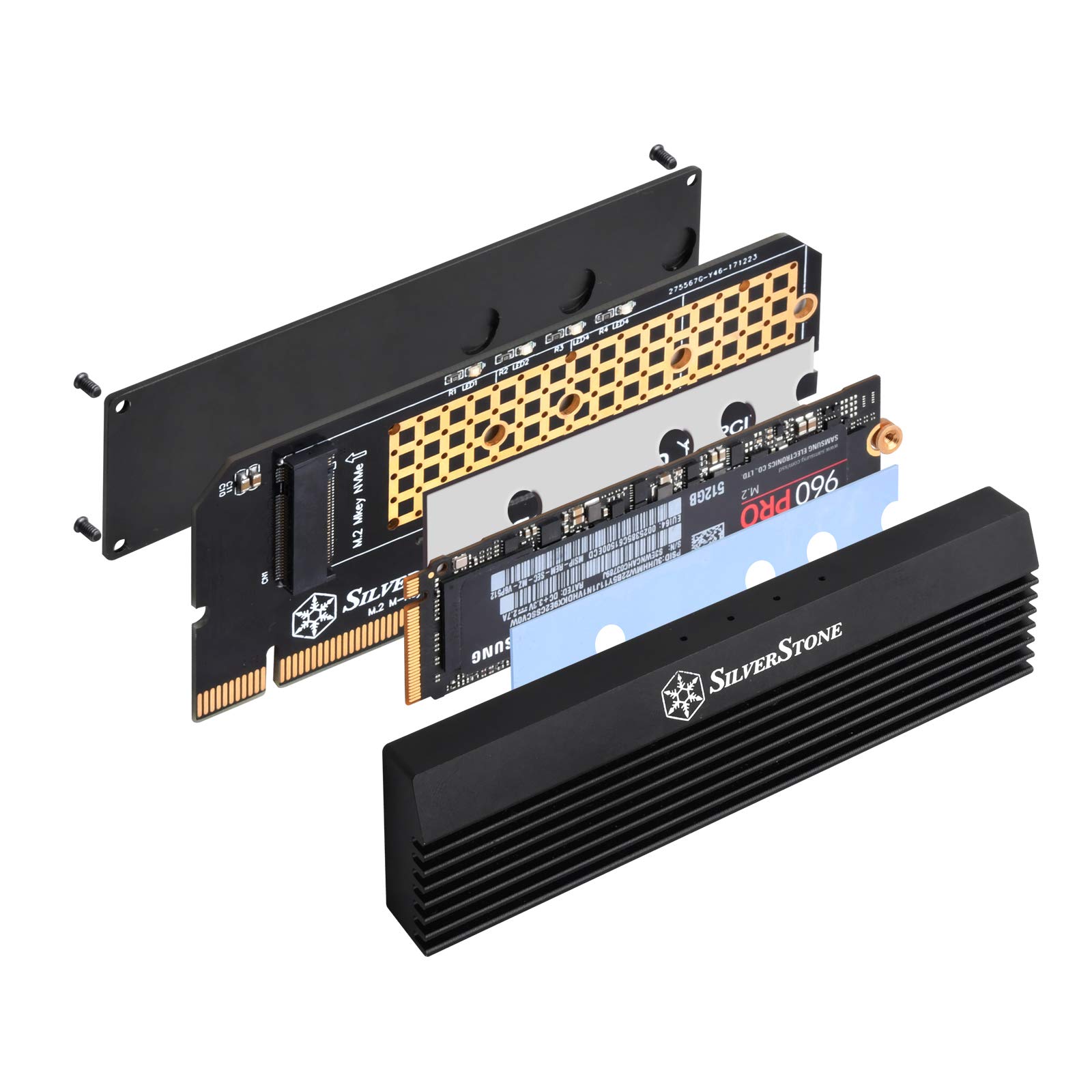

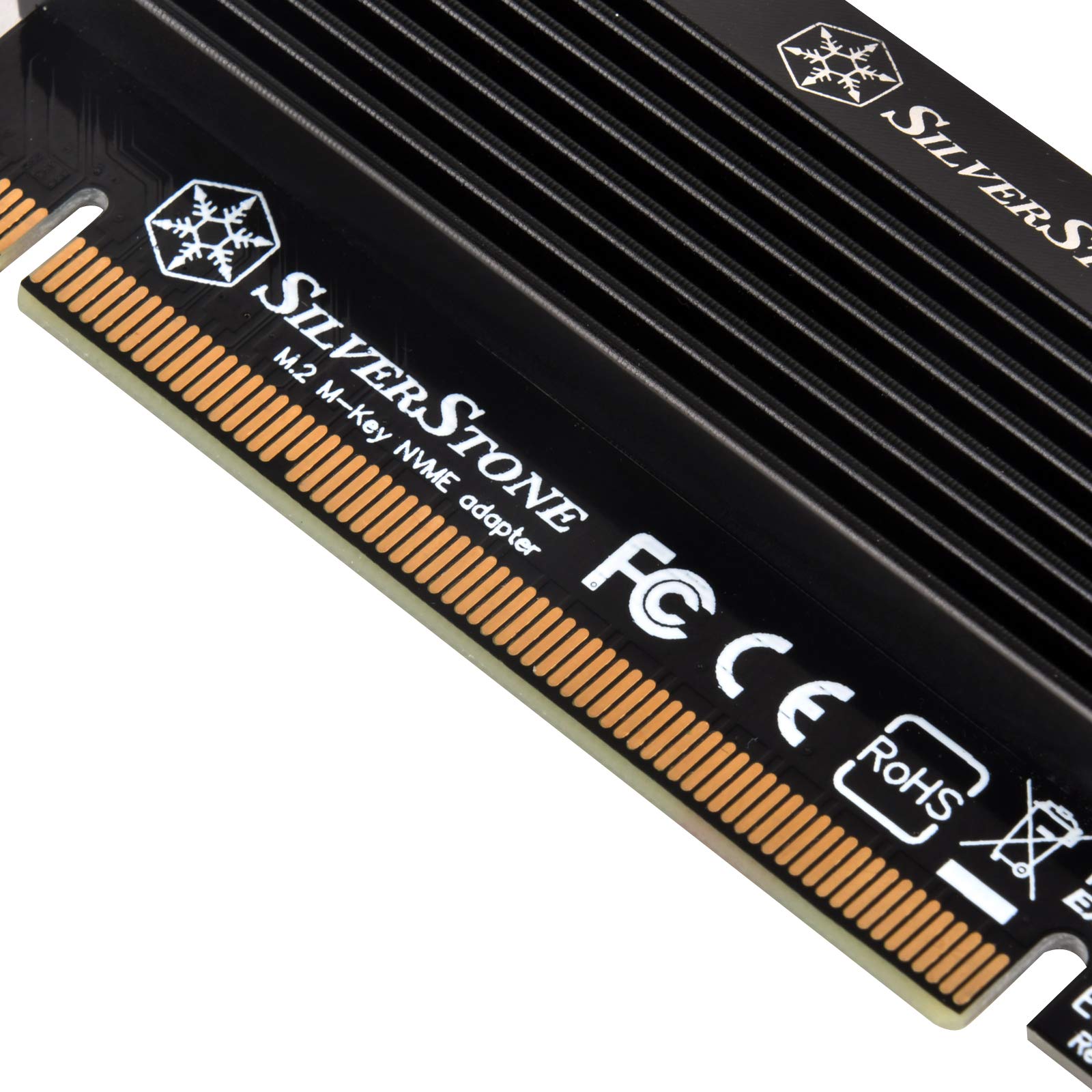
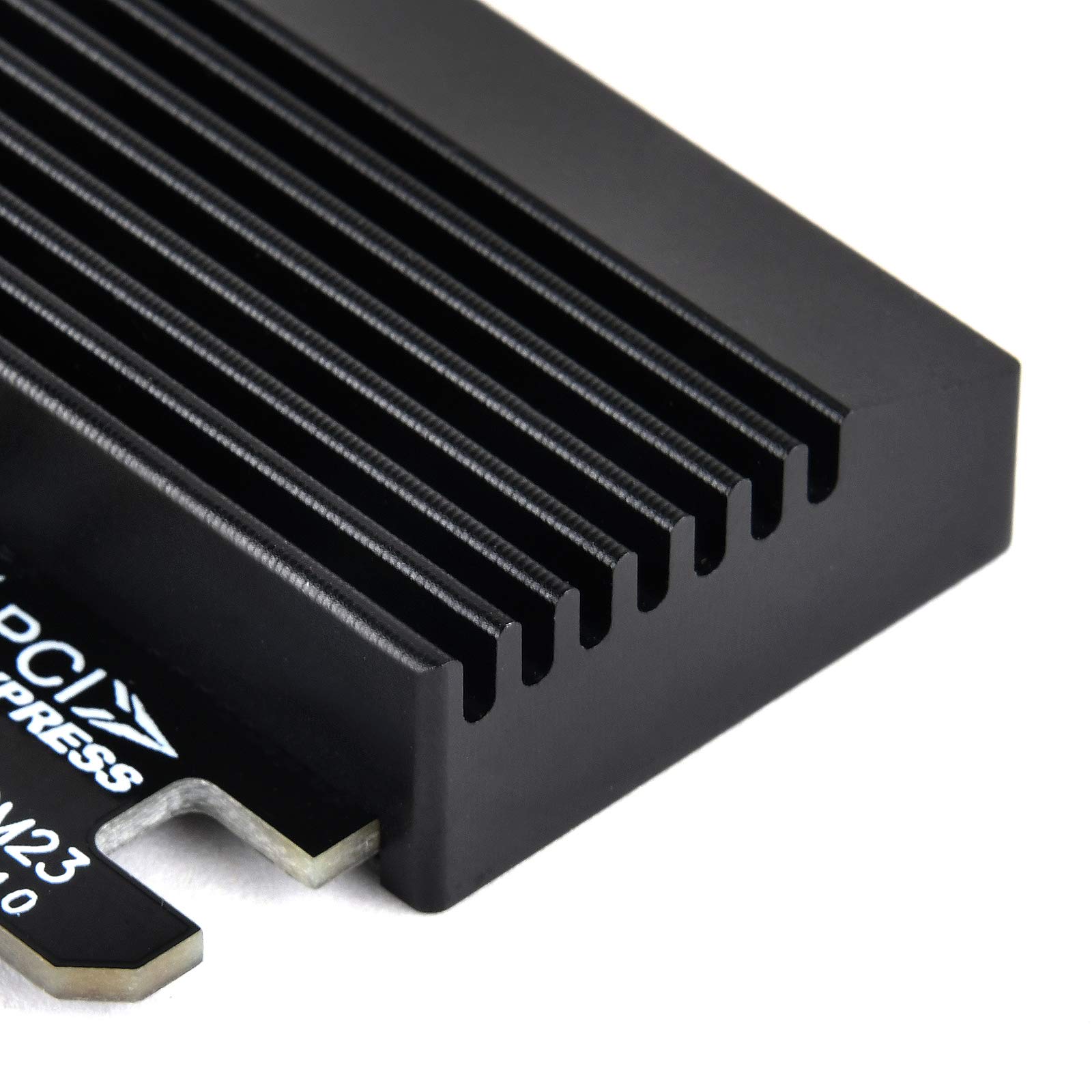

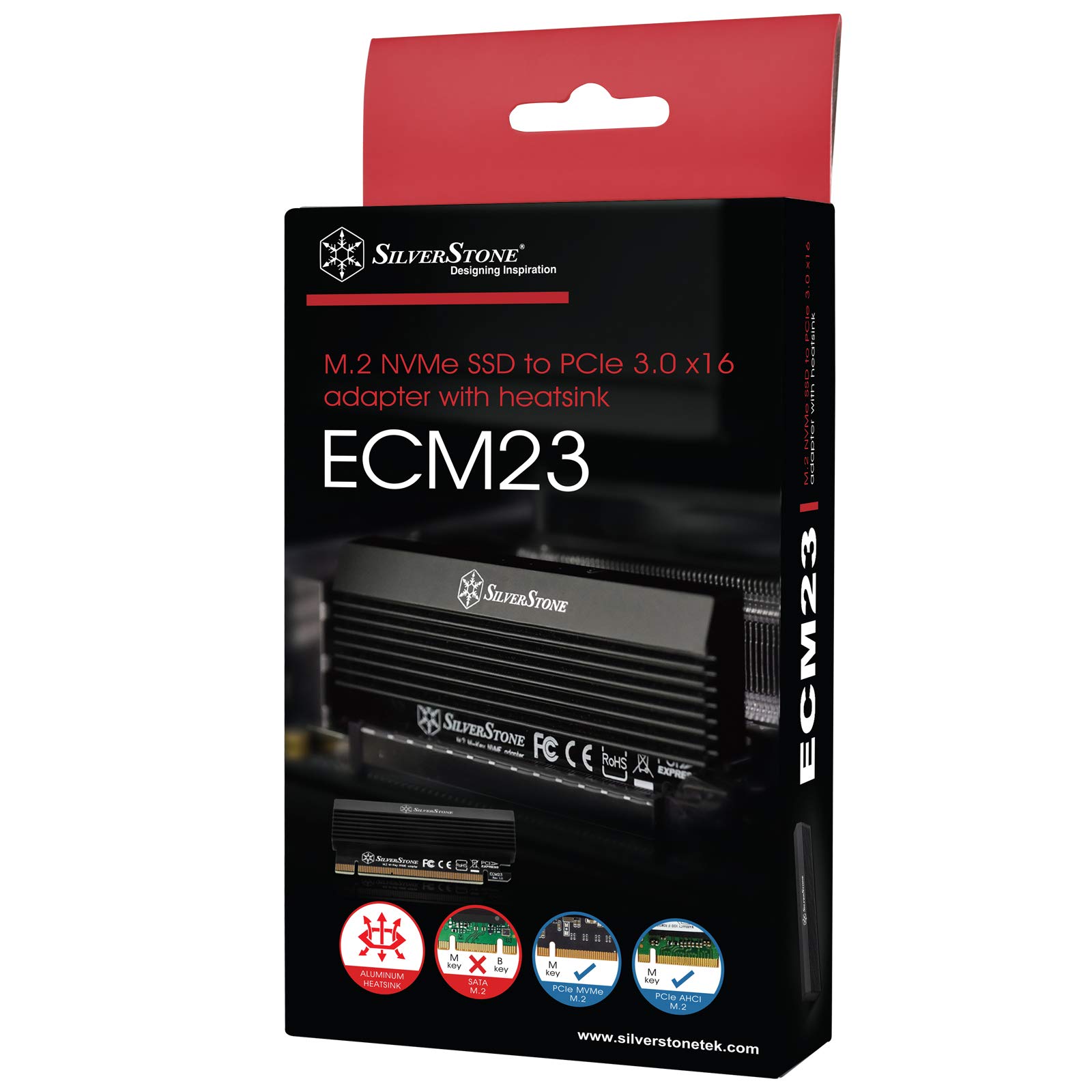
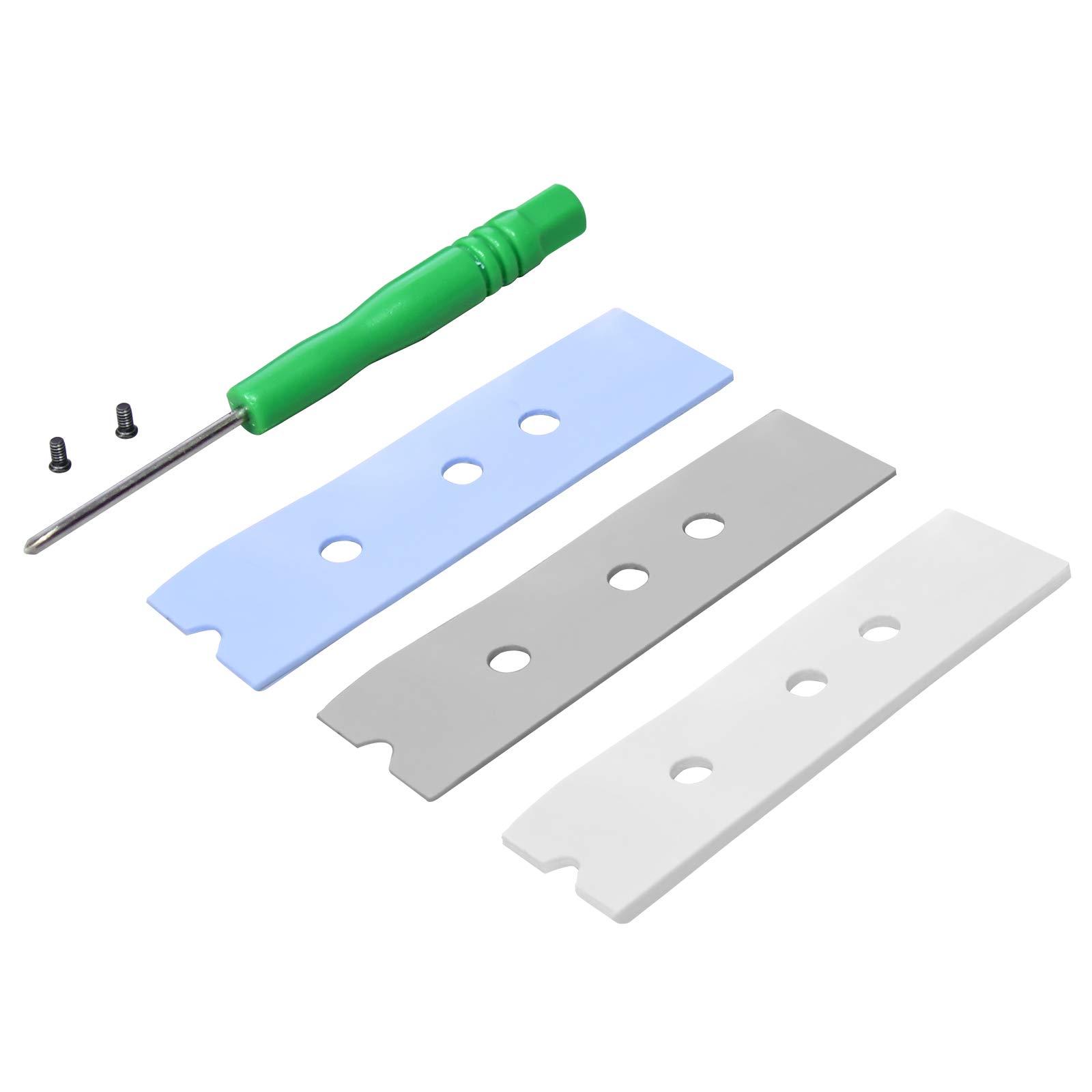
🚀 Elevate Your Storage Game!
The SilverStone SST-ECM23 is a high-performance PCI-E Express Card that converts an M.2 port (M key) into a PCIe x4 interface, featuring an aluminium heatsink and thermal pad for superior cooling. It supports multiple M.2 SSD lengths and requires no driver installation, making it a hassle-free upgrade for any tech-savvy user.
R**.
Keeps temp below 40C
I bought this on the recommendation of the QNAP forum because both SSDs were getting to 46C during the monthly disc test in the early morning, even with the faster fan speed for the hot summer. The temperature stays below 40C now.
S**G
A lot better than no heatsink at all.
I bought this heatsink for my Samsung 970 Evo 1TB NVMe drive to see if it would be more efficient than the motherboard’s own heatsink. I’ve got an Asus Prime Z390-A motherboard and it comes with a solid block of metal that sits over the one M.2 slot. Surprisingly, the other M.2 slot doesn’t have any heatsink at all.Before replacing the motherboards heatsink, a ran a stress test on the Samsung drive and the maximum temperature was 49°C. I reran the same test after replacing with this Silverstone heatsink and the temperature went as high as 51°C. So, it’s not quite as efficient as I’d hoped but still very good. You have to remember; the motherboards heatsink is a large chunk of metal.So, I’ve gone back to the original heatsink for the Samsung drive. However, in the other M.2 slot I have an older Crucial 512GB SATA drive. This has been running up to 53°C without any heatsink. This drive is 60mm card, so I wasn’t sure if I could fit the Silverstone heatsink to it.It is possible to fit this heatsink on a smaller drive as long as you have the physical space to do it. The first job is to place the two rubber bands that come with the heatsink around the drive. Then fit the drive to the motherboard. Remove the sticky backing from the heatsink and stretch the bands on the drive so you can slip the heatsink under them. Once in place and making sure that you’re not shorting anything, let the heatsink stick to the drive. Job is done! Now the Crucial drive runs at a maximum of 41°C while under stress.There are many arguments about fitting heatsinks to M.2 drives. There is a case that drives run faster when running hot. However, the real-world speed increase is virtually undetectable. What is known, is that chips last longer when running at cooler temperatures. Personally, I would put longevity over speed in this case.Overall, this heatsink is almost as good as the motherboards heavy-duty heatsink and certainly a lot better than no heatsink at all.
S**N
Excellent cooler but beware of thermal pad thickness!
I have just purchased two 2 tb m.2 (Sabrient PCIe 4) and required these coolers to use the Sabrients in my spare PCIe slots.The units are well built and the design is sleek and thin enough to enable it to be used beneath a gpu that takes up 2.5 slots (enough room to use the cooler in a third mobo PCIe slot.On testing the temps were very good during gaming from my m.2 being read over two hours whilist being cooled by the unit. Temp reached 39c and remained constant.My only criticism is the instruction stated a certain thermal pad combination for double sided m.2's - use the charcoal thermal pad 0.5 thickness, and give no mention to what the blue pad 1.0 thickness is used for. (I presume this is to be used as standard on one side of the m.2)With the Sabrient 2tb m.2's being slightly thicker, I found using 0.5 thickness pads on each side of the m.2 gave the best performance. I personally would not use 1.0 pads on the thicker m.2's as this could damage them when securing them in the cooler as they may get crushed due to insufficient clearance.I intent on purchasing a third cooler to use with a single sided m.2. I will review the fitting and performance of this when I get around to ordering it.All it all, for a thick Sabrient PCIe 4 m.2 - using two 0.5 thickness thermal pads (one on each side of the m.2) the Silverstone Coolers were excellent.
Z**B
Adequate performance but there are better alternatives
I ordered this thermal pad to use on an overheating m2 ssd that was reaching 74 degrees. You get 2 thermal pads of different thickness (1.5mm and 0.5mm) You are supposed to use this on the underside of the ssd so that it touches the pcb or in my case the copper heatplate under the ssd so that the heat dissipates that way.The 1.5 mm strip is used if your ssd has no chips on the underside (single sided), the 0.5mm strip is used if your ssd has chips on the underside as well (double sided). It seems this product is specific to the m2 adaptor card that Silverstone makes, or other adaptor cards that the m2 slot is quite low in relation to the pcb.In my laptop (alienware 17r3) the distance from the m2 slot to the copper heatplate is not that low profile. Even putting both thermal pads (2mm thickness in total) on the underside of the ssd, it still does not make contact with the heatplate so performace is not optimal. Even so it has dropped the temperature around 6 degrees under heavy load which means that the ssd does not overheat and does not throttle.Thermal conductivity is rated at 4W/m.k which is not exceptional by any means. There are thermal pads with better thermal conductivity you can buy and cut to strips yourself. In the end this product works but there are better alternatives. I have since ordered another thermal pad with better coductivity that I can cut and apply in layers so i can eliminate the gap between the ssd and the copper heatplate.
Trustpilot
3 weeks ago
1 week ago